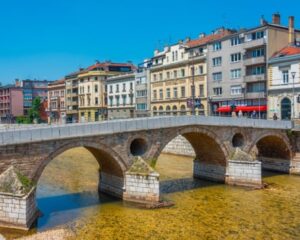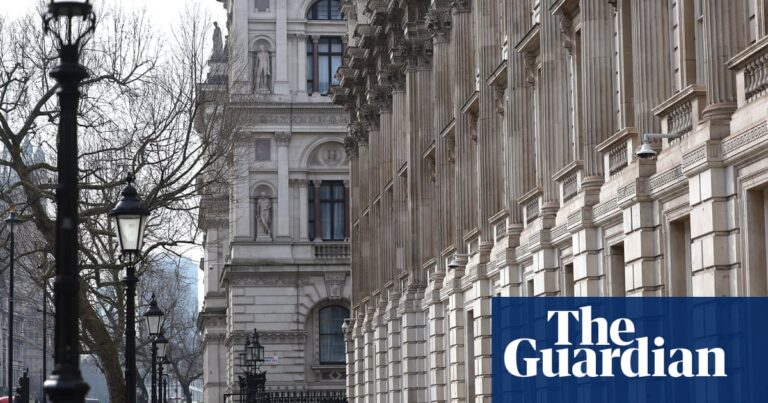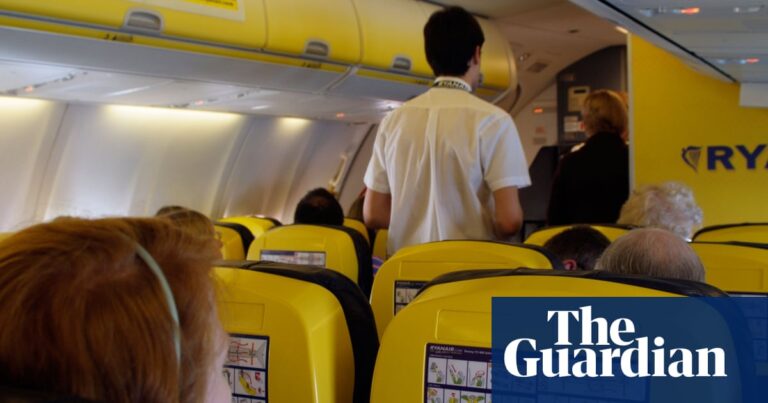It will take more than a TikTok trend to break Britons’ love affair with Mediterranean beaches. But latest figures show travellers are increasingly swapping Málaga for North Macedonia and Benidorm for the Balkans as part of a social media craze for “destination dupes”.
Flights from the UK to Bosnia and Herzegovina soared by 284% in 2024 compared with the previous year, while trips to Montenegro increased by 164%. Getaways to Albania – billed by some as “the new Croatia” – rose by 61%, according to an analysis of Civil Aviation Authority (CAA) data.
Experts say the appetite for lesser-known destinations is being driven by influencers promoting holiday “dupes” – locations that offer the same Insta-friendly scenery for a smaller budget.
The travel blogger Tara Tadlock, who has nearly 15,000 followers on Instagram, said the trend was inspired by a post-Covid burst of adventure as well as the cost of living crisis, as holidaymakers hunt for bargains.
“In the summer months accommodation prices spike … some restaurants will change their menus and charge extra,” she said. “The cost of living is a huge driver. I also think people are looking to get away from the crowds because there’s so many places now that are so congested with tourists.”
The CAA data, analysed by Manchester Airports Group, also revealed that the number of flights to Azerbaijan had more than doubled between 2023 and 2024. Four African countries – Tunisia, Rwanda, Morocco and Ghana – also made the top 10 largest increases in flights from the UK over the same period.
On TikTok, influencers with tens of thousands of followers promote trips to the slopes of Bansko, Bulgaria, instead of the costly French Alps, or a city break in the capital of Podgorica over crowded Athens and Budapest.

The term “destination dupes” was coined by the travel firm Expedia in 2023. Experts spotted that influencers were sharing “duplicate destinations” in a similar way to imitations of designer clothing, another TikTok trend.
It is not just gen Z travellers broadening their horizons, however. The CAA figures showed that millennials and their parents made up the bulk of the passengers heading to the Balkans. Under-25s comprised one in five of those arriving in Albania and 13% of those flying to Montenegro.
The increased demand for lesser-known destinations is also explained by Covid-19, which experts believe changed how many people travel. While visits to tourist hotspots have bounced back – in part driven by an urge to tick off bucket list locations – other holidaymakers are avoiding the crowds.
Research by Expedia found that 76% of boomers – born between 1946 and 1964 – prioritise quieter places compared with gen Z (40%). However, the younger generation tend to be much more inspired by online influencers (41% v 5%) in the search for adventures.
Tadlock said she expected Albania to become “the new Croatia” as it has the stunning scenery without Croatia’s overtourism problem. “The experience I think is a little dampened when you have to wait in line for two hours,” she said. “I do also think that consumers are thinking more about sustainability and the effects of tourism or like just the impact of travel in general.”
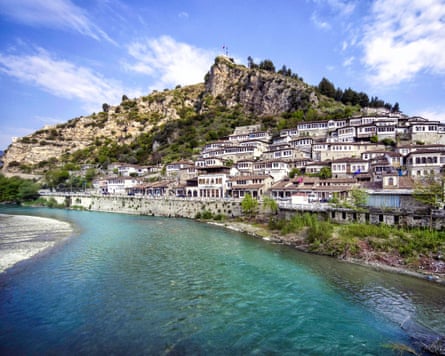
Andrew Macmillan, the chief strategy officer at Manchester Airports Group, which also operates London Stansted and East Midlands airports, said social media was increasingly driving the flights it offers.
“We have undoubtedly seen the true power of social media when it comes to influencing where people choose to travel to,” he said.
“Since 2019, the rise in popularity of platforms like TikTok has resulted in hidden gem destinations becoming not so hidden, which in turn has driven a surge in trips to these places.”
Yet while some Britons were ready to roam, old habits die hard. Tenerife remained the most popular holiday destination from the UK in 2024, with 3 million passengers, followed by Málaga, Mallorca and Alicante. Bosnia and Herzegovina, in comparison, had 80,000 visits after an almost threefold increase, while Albania received just under a million passengers and Montenegro had more than 220,000.
Visiting Bosnia and Herzegovina
By Mary Novakovich
If British tourists are bypassing Benidorm in favour of Bosnia and Herzegovina, they’re evidently in search of something well beyond the average beach holiday. For a start, Bosnia’s 12-mile sliver of the Adriatic coast at Neum – rather like that of Benidorm – is a concrete strip of sprawling resort hotels and crowded pebbly beaches. But you don’t come to Bosnia for the beaches – why would you when you have the jaw-dropping beauty of the Dinaric Alps, towering waterfalls, dramatic river canyons and some of Europe’s most captivating cities?
Rather than join the crowds in Neum, head inland about 25 miles to the serene Hutovo Blato nature reserve, one of the most important wetlands in south-eastern Europe. Take a boat ride through the waterways and marshes of the reserve, keeping an eye out for the broad range of birdlife – herons, shrikes, cormorants, buntings, terns – before cooling off with a swim in Svitavsko Lake.
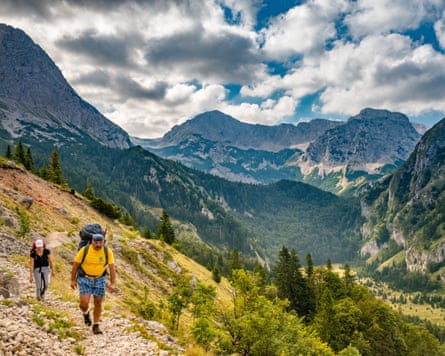
From here, it’s about a 40-minute drive to one of the Herzegovina region’s greatest natural wonders, Kravica waterfalls, whose cascades thunder through rich greenery into the River Trebižat. Swim near the foot of the waterfall, or check out other river swimming spots including the clear waters of Božjak. If you haven’t brought a picnic, the waterside restaurants serving grilled meat and fish will keep you well fed at ridiculously affordable prices.
This sets the stage for the sheer drama of Una national park, the largest in Bosnia, and most of which runs alongside the natural border formed by the River Una with Croatia. The Una has an almost magical hold on the hearts of people on both sides of the border, and over the course of 76 sq miles it dips and falls and crashes through thickly wooded slopes and fertile green plains. One of the park’s stars is Štrbački Buk, a towering waterfall where fearless tour guides on white-water rafting trips jump from the top and survive to tell the tale. There’s more to come further south at Martin Brod, the biggest collection of waterfalls in the park.
Bosnia’s cities are just as compelling. Sarajevo, the capital, is endlessly fascinating, especially when you stand on pedestrianised Ferhadija street, with 19th-century Habsburg architecture to your left and the 16th-century Ottoman quarter to your right. Squeezed into this old Turkish Baščaršija quarter are cobbled lanes of coppersmiths, silversmiths, restaurants, courtyard gardens, an old caravanserai and Bosnia’s largest mosque, Gazi Husrev-beg. As the city marks 30 years since the end of the 1992-95 war, it’s an apt time to visit the Museum of Crimes Against Humanity and Genocide and the Siege of Sarajevo Museum.
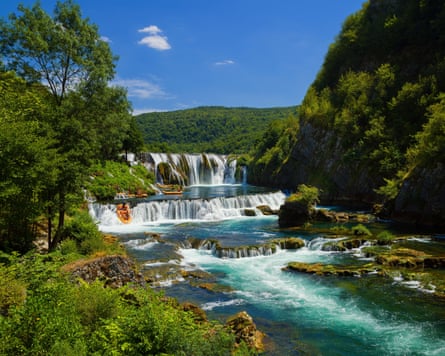
Herzegovina’s chief city, Mostar, is a popular – often too popular – destination for day-trippers from Dubrovnik. But it’s hard to resist the magnificence of its reconstructed 16th-century Ottoman bridge, Stari Most, the emblem of the city. Once the crowds are gone, you can amble through the old Ottoman quarter at a more relaxed pace. From here it’s less than a half-hour drive to the extraordinary sight of the 16th-century Sufi lodge Blagaj Tekke, which was ingeniously built into a limestone gorge by the source of the River Buna. You won’t find that in Benidorm.
Source: theguardian.com







